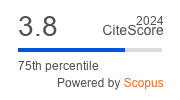Article | Open Access
Handbook, Standard, Room: The Prescription of Residential Room Types in Sweden Between 1942 and 2023
| Views: | 1348 | | | Downloads: | 971 |
Abstract: Norms and handbooks have played a key role in the design of residential rooms in Sweden since the 1940s. Ever since, changes in housing policies have led to varying definitions and regulations of residential rooms, allowing their existence, defining their configuration, and framing their performance. And yet, none of these rooms has been built; they are prescribed room types that belong in the pages of handbooks that validate the framework in which housing design can operate. What are these prescribed room types? What do they look like? Who and what do they include? Have they changed over time? In response to these questions, this article follows the evolution of a set of residential room types in the design handbooks that have accompanied housing policy bills in Sweden from 1942 to 2023. These manuals are not the law itself but operate as an interface for professionals and designers by reflecting the practical consequences of the norm. Diagrams, dimensions, texts, and references to housing literature vary from handbook to handbook to define the specific traits of each type of room. By studying these traits in relation to key moments of Swedish housing politics, the article reveals the role that norms and standards have played in the establishment of the regulatory regime in which housing design in Sweden operates today.
Keywords: housing design; housing regulations; housing standards; residential rooms; room typology; Sweden
Published:
© Daniel Movilla Vega, Lluis Juan Liñán. This is an open access article distributed under the terms of the Creative Commons Attribution 4.0 license (http://creativecommons.org/licenses/by/4.0), which permits any use, distribution, and reproduction of the work without further permission provided the original author(s) and source are credited.


